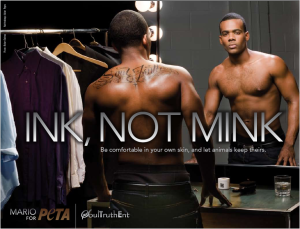Over the course of history, fashion has been the subject of a lot of criticism and attacks. Fashion has been the center of intersecting perspectives and different views that have caused diverse scandals across the years.
Clothes have been blamed for social disturbances and issues, being considered to promote vanity, loose sexual morality, conspicuous consumption, and effeminacy (in men). But where does this originate?
The reason for all this is because fashion intersects so obvious with other fields such as gender roles, social class and sexuality. Because our bodies have been the subject of a lot of social, moral, sexual pressure and prohibition, the things that represent them have seen a lot of criticism of their own.
In order to understand the historical condemnations of fashionable dress, we need to examine the attitudes toward gender, sexuality, and clothes. Women are the ones that have always been associated with fashion and clothing, but also with inconstancy and change, which are two of fashion’s characteristics. Women have also been seen as weak and wicked, and there is an old background to that.
Within Judeo-Christian teachings, it all really starts with Adam and Eve. In these teachings, nakedness became to be a shameful thing after the Fall, which in the eyes of many was the ‘work’ of Eve who convinced Adam to fall into temptation, so the connection between women, clothing and sin is easily made.
Because women are so attached with sexuality and sin, it is obvious that women’s clothes have been the battlefield of many debates. In the Middle Ages, it was clearly stated that a woman must dress in a very modest way, as Christian teachings believed that redemption was found in the renunciation of decorating one’s body and modesty in dress, which was thought to be a a moral duty born out of Eve’s guilt.

A photo of Audrey Hepburn wearing pants. Just think that 100 years ago that would not have been acceptable. The other way around (men wearing a dress) is still not culturally accepted.
It’s interesting how, even though men’s clothes were extremely sexual, it was only women who could be accused of seduction in dress. This is something that is also found today in quite an amount of rape cases, in which the clothes of the victim are considered relevant in court. We notice again how we communicate things through our clothes, whether we want it or not.
Later, as society developed and the different social classes started to mix, the fear of the breakdown of class distinctions created anxiety among the wealthy. For example, you might not know this, but in the 18th century, there was a time when prostitutes were not allowed to wear fur, so that they don’t get mistaken for “respectable women”. But it was not only a social and sexual thing that got people talking (or acting without talking better said), it was also the time’s morality that directed another wave of criticism towards fashion.

Today, Peta protests against fur coats.
It was believed during the 17th and 18th century that many women would refuse to feed their children and spend their money on clothes. The concept of the superficial woman concerned on fashion was as powerful as it had ever been. It was thought that being too decorated meant that the person had fallen in the sin of vanity.
But where are the men in all of this? Yes, men did not start to be criticized for their clothes until the 18th century, when the dandy movement first appeared. Just imagine how the men who were interested in clothes were seen, in a time when women and all the negative things about them were associated with clothes. Not only were the dandies seen as superficial, vain, immoral etc, but they were also seen as effeminate. It was believed that men were supposed to be “above” fashion.
Since then, these types of discourses have mellowed down, but sadly they did not disappear.
Other forms of criticism towards fashion took the spotlight though, such as the idea that fashion is a waste and it was associated with a new way of consumption. Being well dressed became an indicator of wealth and transcendence from the realm of necessity.
More modern critics of fashion believe that fashion is irrational in it’s constant ‘not fashionable anymore’. This is something that is sure up to debate, whether fashion is a reinvention of “ugly”, which we don’t realize is ugly until the new fashion kicks in. Maybe here is a good moment to take and and remember that saying: “Fashions fade, style is eternal”.
Whether fashion is (sometimes) immoral is hard to tell, many will agree that the corsets worn by women in the 18th century were not in any way a step up for women, but some things are still up and come up as new times come by. In recent times we see a lot of discussion regarding clothes and often it’s tied to religion (again): should Muslim women wear a veil in schools or not, should the Pope wear designer shoes or not and the list can go on.

Pope Benedict XVI was the subject of a debate discussing whether his shoes were Prada. Talk about that move, “The Devil Wears Prada”. Turns out his shoes were not Prada after all, but it doesn’t really matter since the opinions were laid out there.
What we feel clothes should be criticized for is the fact that at often times, they create a hierarchy. Rich people many times don’t like to talk about money, but they let the clothes do the talking. We make decisions regarding one’s skills and personality based on their clothes and we judge people according to the way they dress. We are the first ones to say that clothes do play an important role in our contemporary culture, but often we give them roles they should not have, and that’s the issue we should be commenting on.
Fraquoh and Franchomme
Further reading:
The Politics Of Dressing Up: Masculinity Vs. Femininiy
Men’s Body Image Considerations
How The Dandy Movement Impacts Today’s Fashion
P.S. What do you think of all of the attacks on fashion? Share your thoughts below!

